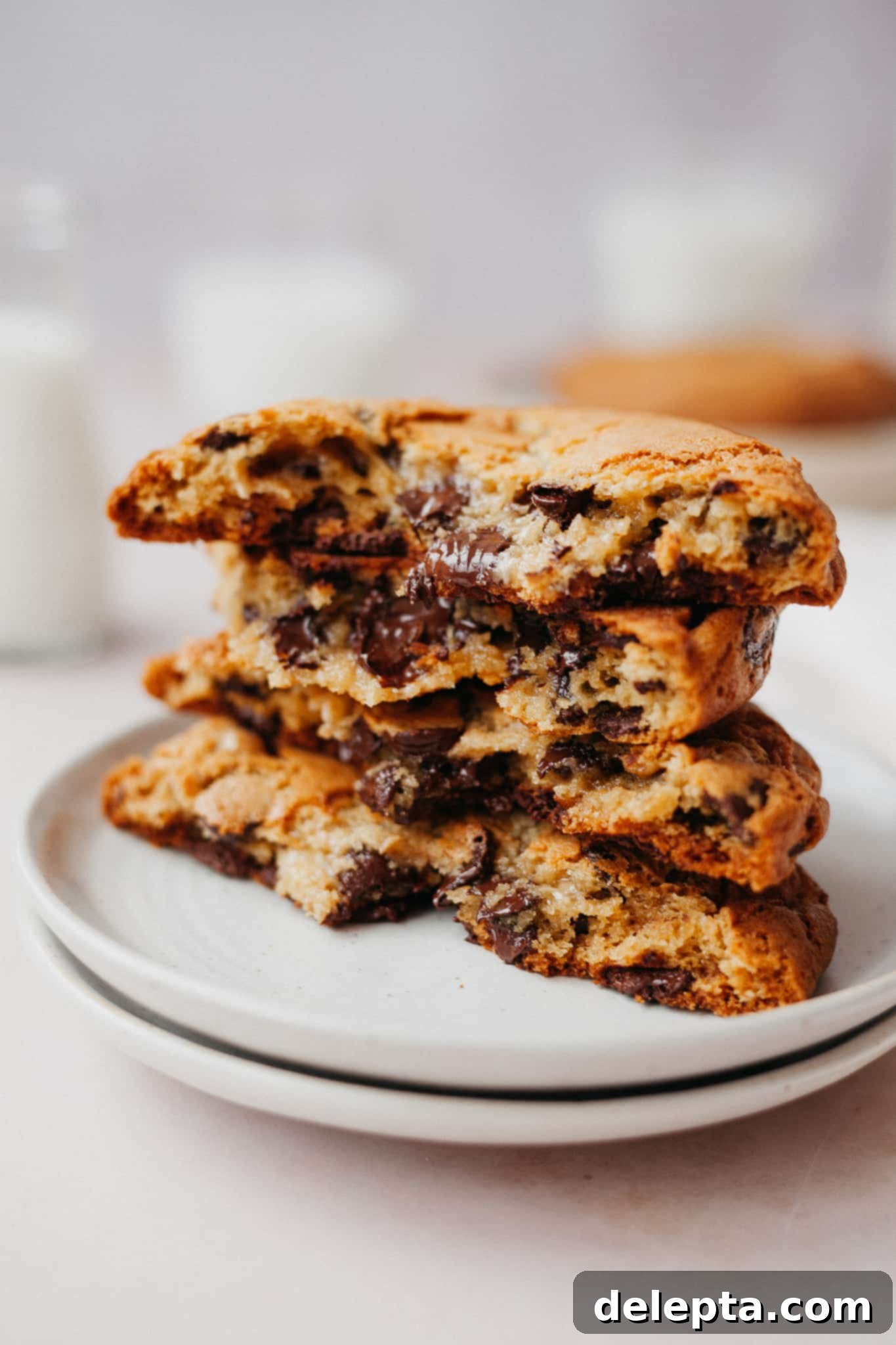Decadent Levain Bakery Style Halva Chocolate Chip Cookies: The Ultimate Thick & Chewy Treat
Prepare yourself for an extraordinary cookie experience. These copycat Levain bakery-style chocolate chip cookies aren’t just thick; they’re packed with chunks of halva, one of the most delightful Middle Eastern confections. Imagine biting into a colossal cookie with a perfectly golden exterior, giving way to an irresistibly soft, slightly underbaked middle – a true hallmark of the beloved New York City originals. But here, we elevate that classic with the nutty, sweet, and unique texture of halva, creating a treat that is both familiar and excitingly new.
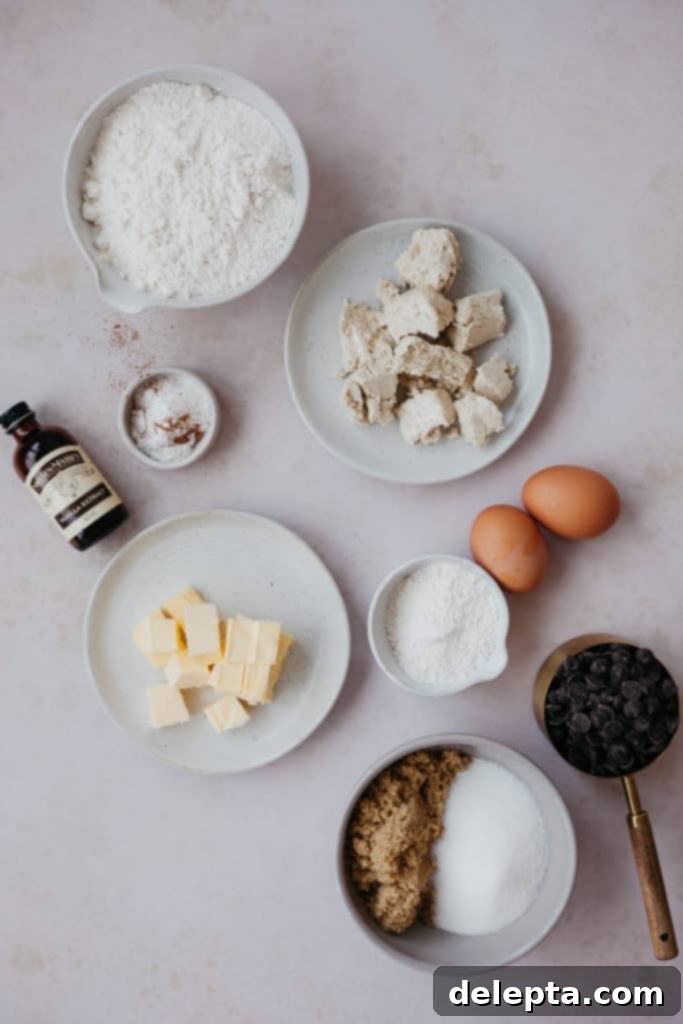
Unveiling the Magic of Halva in Cookies
While you likely have most traditional cookie ingredients in your pantry, the star ingredient you might need to seek out is halva. If you’re new to this delightful confection, you’re in for a treat! Halva is a dense, sweet dessert that’s popular across the Middle East, the Mediterranean, and parts of Eastern Europe. It’s primarily made from tahini (sesame paste) and sugar, often enhanced with other ingredients like pistachios, nuts, or even chocolate swirls. Its texture is truly unique – it’s crumbly yet melts in your mouth, offering a distinct nutty flavor with a subtle hint of bitterness from the tahini.
You can find halva in various forms, from plain blocks to those beautifully marbled with chocolate, or studded with nuts. Enjoying halva on its own is a wonderful dessert experience, but incorporating it into baked goods, particularly these rich chocolate chip cookies, takes it to an entirely new level. The halva softens slightly during baking, creating pockets of rich, sesame-infused sweetness and a delicate chewiness that complements the gooey chocolate chips perfectly. It adds an incredible depth of flavor and an interesting textural contrast that makes these cookies truly unforgettable.
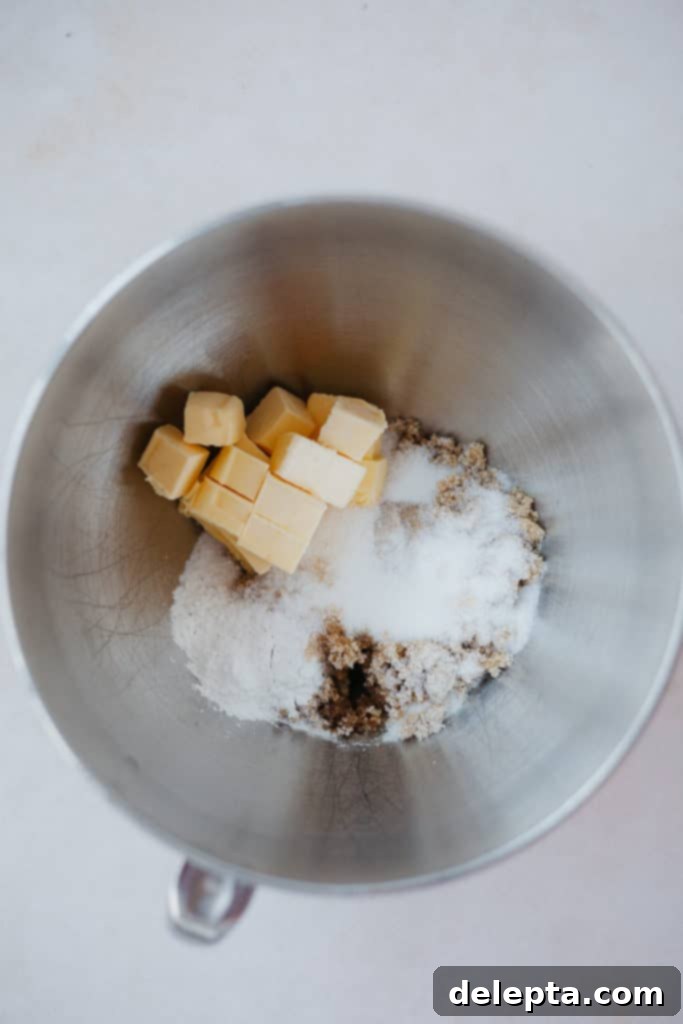
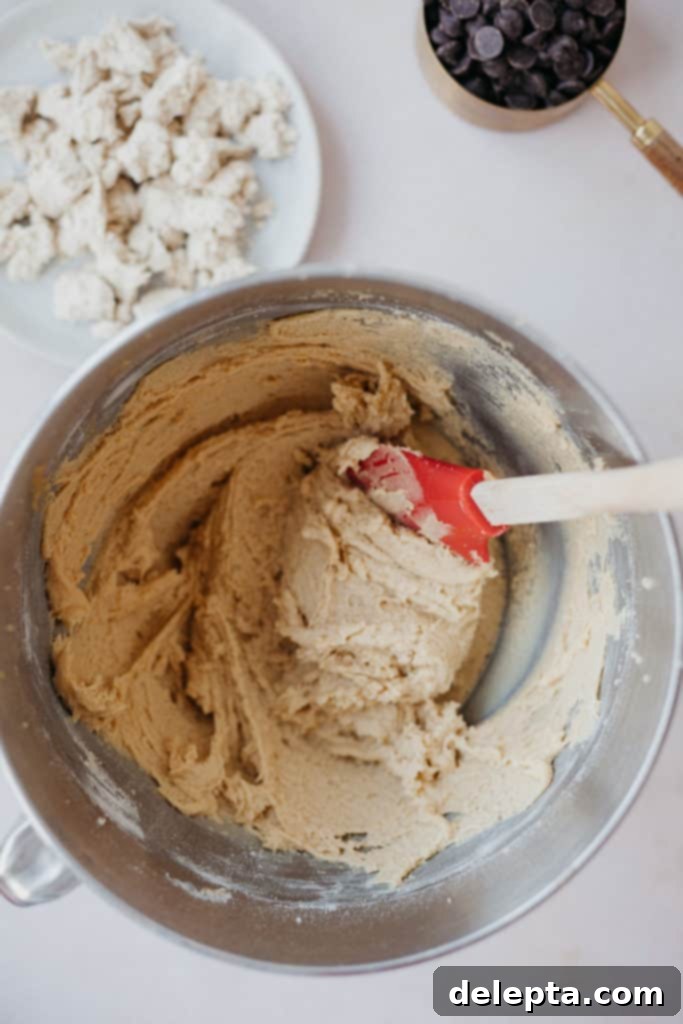
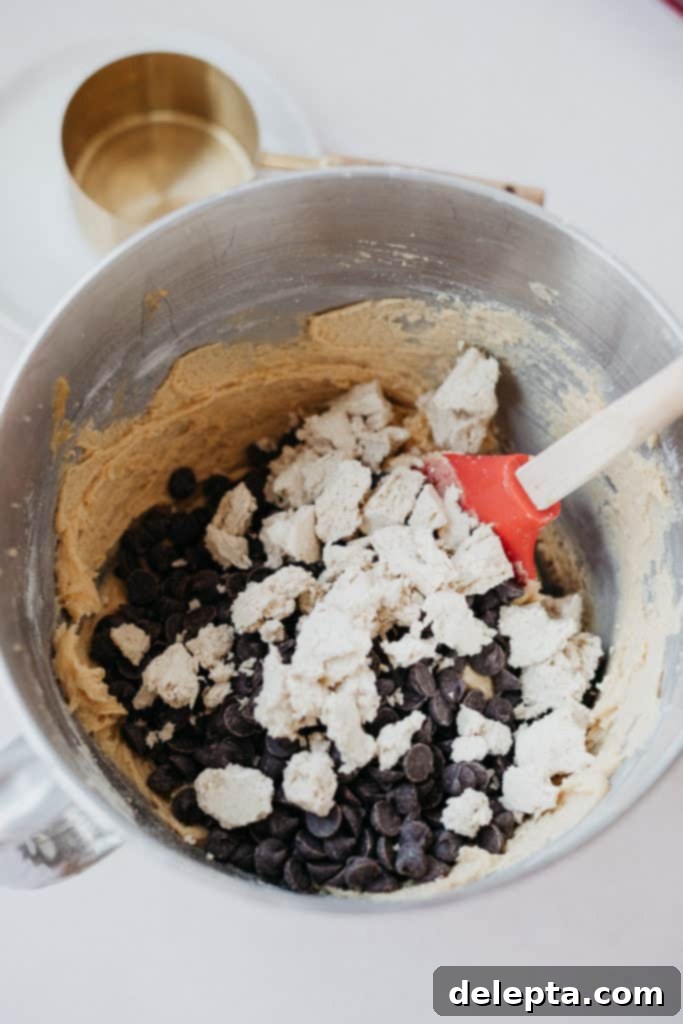
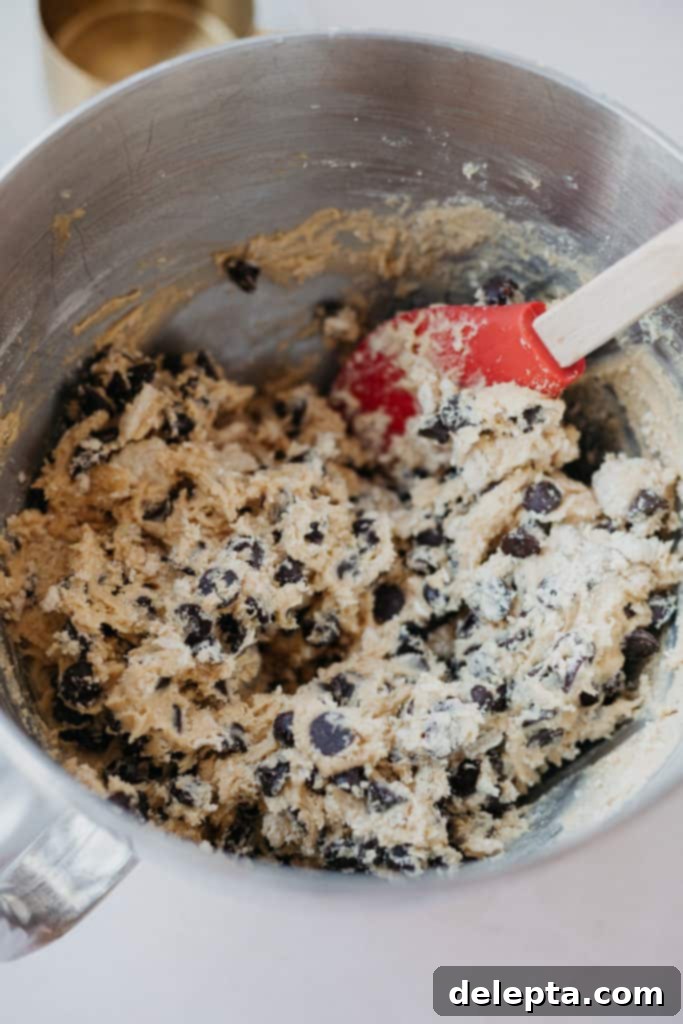
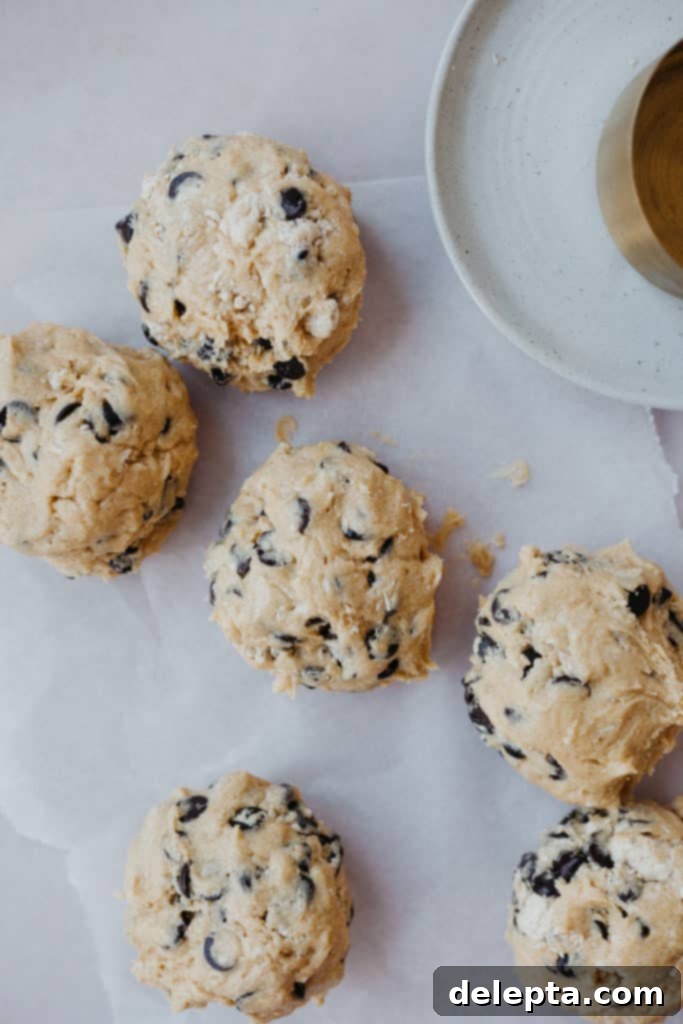
The Secrets to Achieving Super Thick Levain Bakery Style Cookies
When we talk about “Levain bakery style” cookies, we’re talking about cookies that are truly substantial – often described as being the size of your hand, or even your face! This recipe yields only six cookies, but that’s because each one is a generous 6 ounces (approximately 170 grams) of pure indulgence. Achieving this impressive thickness isn’t just about making them big; it’s about a combination of techniques and careful ingredient management. Here are the key factors:
Precision Weighing for Uniformity
One of the most crucial steps to achieving these super thick cookies is to accurately weigh out each individual cookie dough portion. While it might seem like an extra step, using a kitchen scale ensures that every cookie is precisely 6 ounces. This uniformity not only guarantees even baking but also contributes to that signature tall, domed shape. Without consistent sizing, smaller cookies will bake faster and spread more, while larger ones might remain too raw in the center, ruining the desired texture.
The Power of Abundant Mix-Ins
These cookies are incredibly thick not only because of their size but also due to the sheer volume of mix-ins. With a generous amount of chocolate chips and halva, the cookie dough becomes densely packed. This high ratio of solid ingredients to dough creates a structural integrity that prevents excessive spreading during baking. The mix-ins act as barriers, holding the dough taller rather than allowing it to flatten. If you decide to substitute the chocolate chips or halva, it’s vital to use the same total weight of an alternative mix-in to maintain this crucial structure. Otherwise, your cookies might spread more than desired, losing their characteristic height.
The Magic of Cold Butter
Unlike many traditional cookie recipes that call for room-temperature butter for a softer, chewier result, the secret to preventing these giant cookies from spreading too much lies in using cold, cubed butter. Cold butter takes longer to melt in the oven. This means the cookie dough has more time to set and develop its structure before the fat completely liquefies and encourages spreading. The slower melting process of cold butter is instrumental in creating those tall, craggy edges and a compact, thick body that Levain is famous for. It’s a fundamental difference that makes all the difference.
The Essential Chill: Resting the Dough
Finally, and perhaps most importantly, is the necessity of chilling the dough. Once you’ve weighed out and shaped each massive cookie ball, they absolutely must be refrigerated for a minimum of 12 hours, though chilling them overnight or even for 24 hours will yield even better results. This extended chill time serves multiple purposes:
- Solidifies the Butter: Just like using cold butter initially, chilling the formed dough balls ensures the butter is completely firm. This further minimizes spreading in the oven, contributing significantly to the cookie’s thickness.
- Hydrates the Flour: During chilling, the flour in the dough has time to fully absorb the liquids, resulting in a more hydrated dough. This leads to a chewier, more tender crumb and prevents a dry, crumbly texture.
- Develops Flavor: The rest period allows the flavors of all the ingredients – the sugars, vanilla, chocolate, and especially the halva – to meld and intensify, creating a richer, more complex taste profile in the final baked cookie.
Without this crucial chilling step, even with cold butter and ample mix-ins, your cookies will spread excessively and won’t achieve the iconic Levain height and texture.
A Note on Cake Flour
This recipe also calls for a small amount of cake flour in addition to all-purpose flour. Cake flour has a lower protein content than all-purpose flour, which contributes to a more tender and softer crumb in the cookies. This subtle addition helps create that delightful contrast between the crisp exterior and the super soft interior.
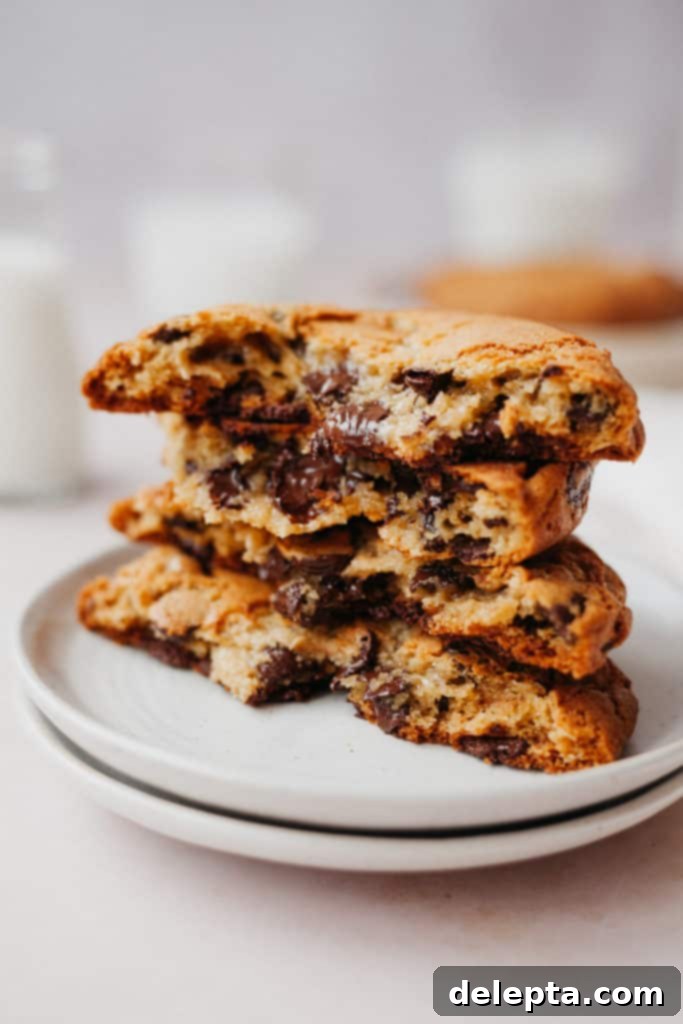
Frequently Asked Questions About Halva Chocolate Chip Cookies
No problem! While halva adds a unique touch, you can certainly make these delicious cookies without it. You can replace the halva with an equal amount (by weight) of extra chocolate chips for an even more intensely chocolatey cookie, or try butterscotch chips for a different flavor profile. For a true Levain-inspired classic, substitute the halva with the same amount of toasted walnuts, which offer a delightful crunch and nutty flavor.
Absolutely! You can easily make your own DIY cake flour substitute at home. Simply measure out ¼ cup of all-purpose flour. Then, remove ½ tablespoon of that all-purpose flour and replace it with ½ tablespoon of cornflour (also known as cornstarch). Sift these two together through a fine-meshed sieve at least three times. This process lightens the flour and mimics the lower protein content of commercial cake flour, helping to achieve that desired tender crumb in your cookies.
Yes, it’s recommended to chop the halva into medium-sized pieces before folding it into the cookie dough. Don’t worry about making them perfectly uniform; a rustic chop is fine. As you fold them into the sticky cookie dough, the halva pieces will naturally break down further into smaller, irregular chunks and crumbles. This ensures you get delightful bursts of halva flavor and texture throughout every bite of the cookie, rather than one large, overwhelming piece.
The signature Levain style involves a slightly underbaked, very gooey center. However, if you’re not a fan of that soft, doughy middle and prefer a more uniform, baked-through texture, simply extend the baking time. After the initial 12-15 minutes, bake your cookies for an additional 4-5 minutes, keeping a close eye on them. They should still look soft, but the edges will be more golden brown, and the center will be firmer when gently pressed.
This is a crucial step! Because these cookies are intentionally underbaked in the center to achieve that signature gooeyness, they need a significant amount of time to set properly after coming out of the oven. You must wait at least 20 minutes (or even slightly longer, up to 30 minutes) before attempting to move or eat them. During this cooling period, residual heat continues to cook the center, allowing the structure to firm up enough so they don’t fall apart. Patience is key to enjoying these perfectly decadent treats!
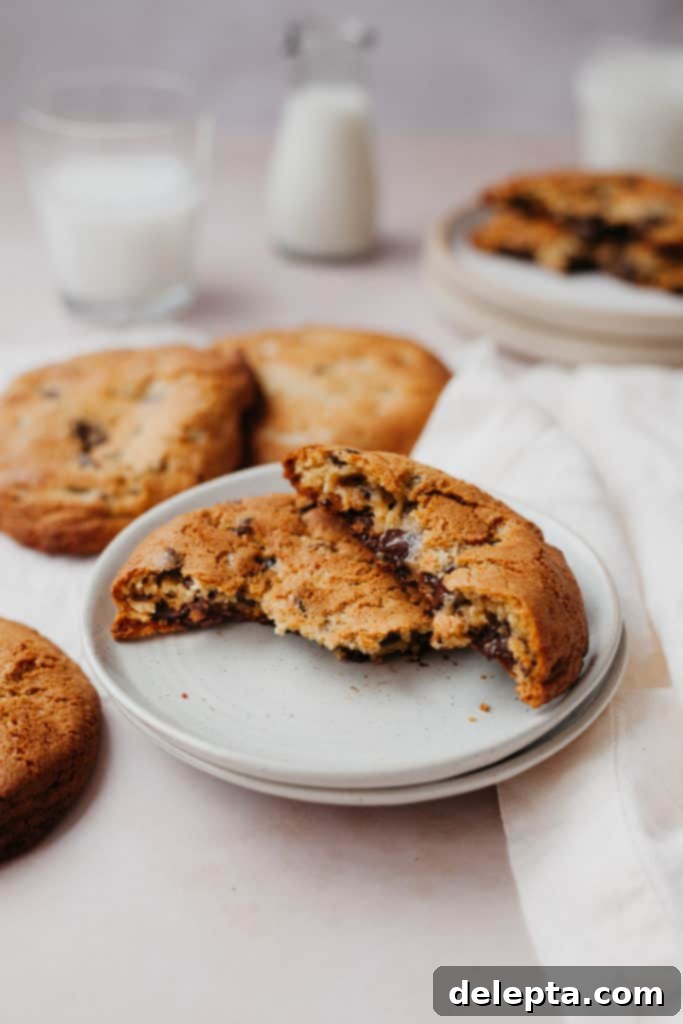
Storing Your Delicious Halva Chocolate Chip Cookies
Proper storage ensures you can enjoy these magnificent cookies and their dough for longer. Here are some tips:
Unbaked Cookie Dough Storage
The beauty of this recipe is that you can prepare the dough in advance! Once you’ve formed and wrapped the individual cookie dough balls, you can store them in the refrigerator for up to 1 week. This makes it incredibly convenient to bake fresh cookies whenever a craving strikes, or to prepare them ahead of a party. For longer storage, you can freeze the unbaked dough balls for up to 6 months. To bake from frozen, simply thaw the desired number of dough balls in the refrigerator overnight, unwrap, and then bake as directed in the recipe. You might need to add an extra minute or two to the baking time if they are still very cold.
Baked Cookie Storage
While these cookies truly taste their absolute best on the day of baking, especially when warm and gooey, you can certainly store any leftovers. Place them in an airtight container at room temperature for up to 2 days. To refresh day-old cookies and bring back some of that freshly baked magic, you can warm them briefly in a microwave for 10-15 seconds, or in a preheated oven (around 300°F/150°C) for a few minutes until the chocolate and halva are melty again. Avoid refrigerating baked cookies, as it can dry them out and alter their texture.
Pin This Recipe for Later: Your Future Self Will Thank You!
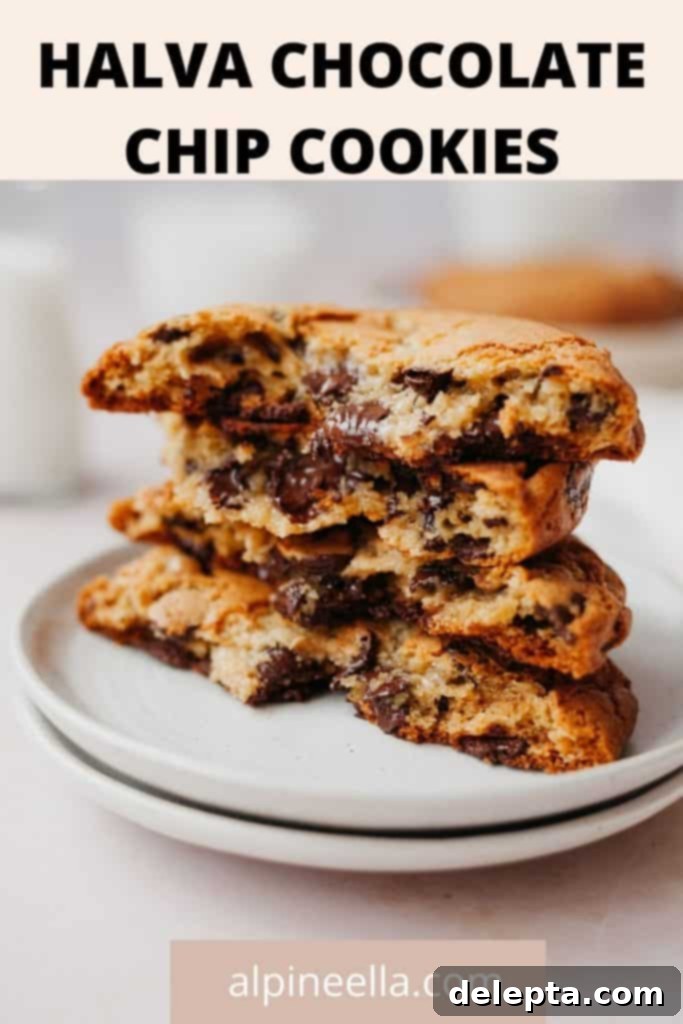
Loved This Recipe? Explore More Delicious Treats!
If you enjoyed the unique flavors and textures of these halva chocolate chip cookies, we encourage you to try some of our other popular recipes:
- Festive Peppermint Bark Cookies
- Warm & Comforting Spiced Oatmeal Chocolate Chip Cookies
- Nostalgic Homemade Girl Scout Samoas (Caramel deLites)
Did you make these incredible halva chocolate chip cookies? We’d love to see your creations! Don’t forget to tag @alpineella on Instagram if you share your culinary masterpieces, or simply leave a comment below to let us know how they turned out. Your feedback and photos inspire us!
Recipe: Thick Halva Chocolate Chip Cookies
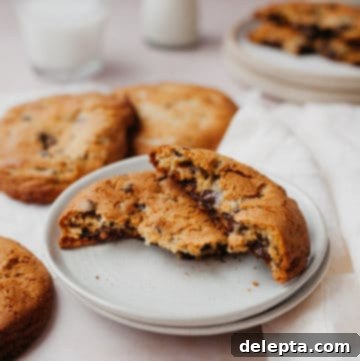
Thick Halva Chocolate Chip Cookies
Ella Gilbert
Pin Recipe
Save RecipeSaved!
Ingredients
- 240 grams all-purpose flour 2 cups
- 30 grams cake flour ¼ cup
- 1 ½ teaspoon baking powder
- 1 teaspoon baking soda
- 1 ½ teaspoon kosher salt
- 113 grams butter, cubed and cold ½ cup
- 113 grams light brown sugar ½ cup
- 100 grams sugar ½ cup
- 326 grams chocolate chips 2 cups
- 2 eggs
- ½ tablespoon vanilla extract
- pinch nutmeg
- 130 grams halva 1 cup
Instructions
-
In the bowl of a stand mixer fitted with a paddle attachment, combine the cold butter (cubed), both sugars, vanilla extract, kosher salt, nutmeg, baking powder, and baking soda. Cream these ingredients together on low speed to just combine.
-
Gradually increase the mixer speed from low to medium and beat the mixture for at least 10 minutes. The dough should become noticeably lighter in color, fluffy, and soft. Remember to stop the mixer halfway through to scrape down the sides and bottom of the bowl, ensuring everything is thoroughly incorporated.
-
With the mixer still running on low speed, add the eggs one at a time. Beat well after each addition until fully combined before adding the next egg. This helps emulsify the eggs into the mixture, creating a smoother dough.
-
Reduce the mixer speed to low again. Slowly pour in both the all-purpose flour and the cake flour (or your DIY cake flour substitute) until just combined. Be careful not to overmix the flour, as this can lead to tough cookies.
-
Remove the bowl from the mixer. Using a sturdy spatula or your hands, gently fold in the chocolate chips and the chopped halva until they are evenly distributed throughout the dough.
-
Using a kitchen scale, carefully weigh out each cookie dough portion to be precisely 6 ounces (approximately 170 grams). Shape each portion into a round ball. Wrap each cookie ball individually in plastic wrap and refrigerate them for a minimum of 12 hours. For the best results, chilling overnight or even for 24 hours is highly recommended. This step is crucial for preventing spread and developing flavor.
-
When ready to bake, preheat your oven to 400°F (200°C). Line a baking tray with parchment paper. Bake the chilled cookies, 3 at a time (to avoid overcrowding), for 12-15 minutes. The edges should be golden brown, but the centers will still look very soft and slightly underbaked.
-
Once out of the oven, do not touch or move the cookies immediately. Allow them to rest on the hot baking tray for at least 15-20 minutes to set properly. This allows the residual heat to finish cooking the centers and prevents them from falling apart when moved. Enjoy them warm!
